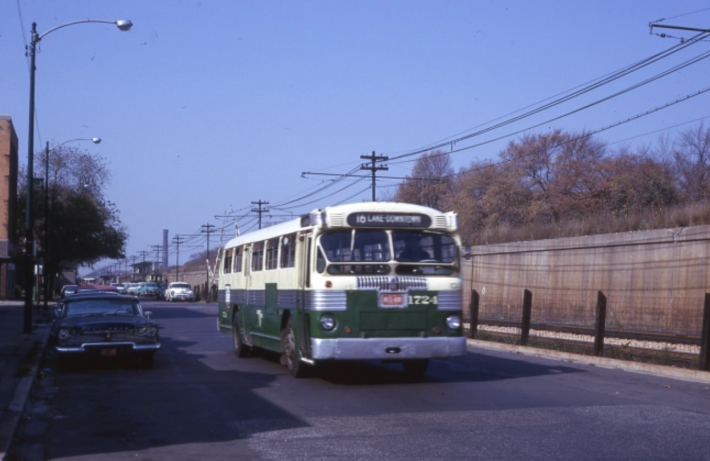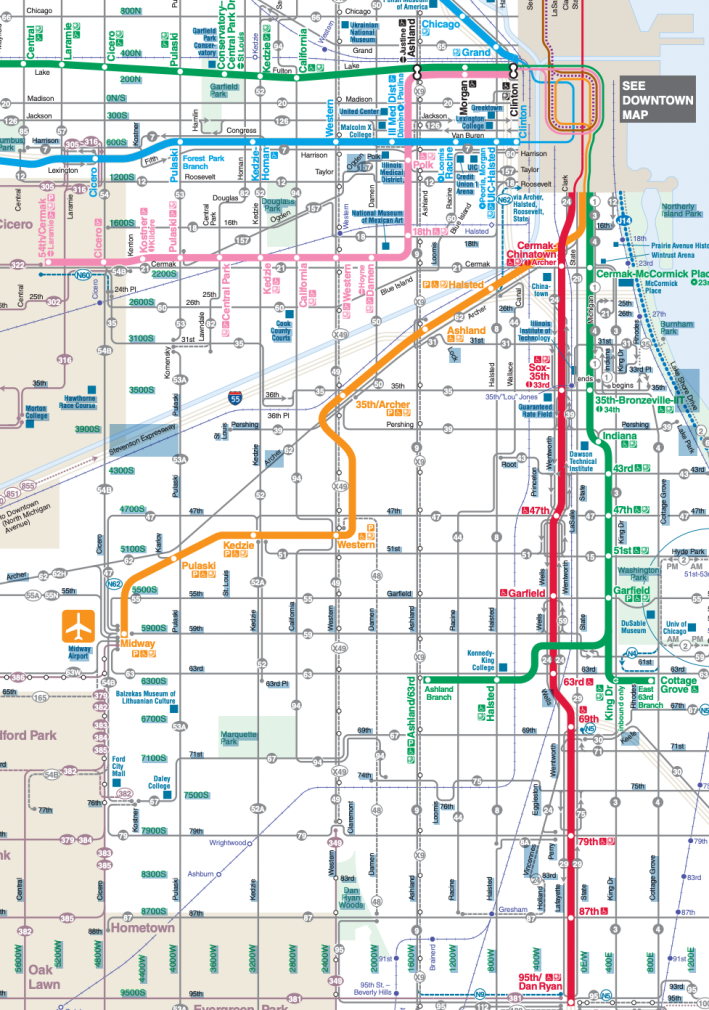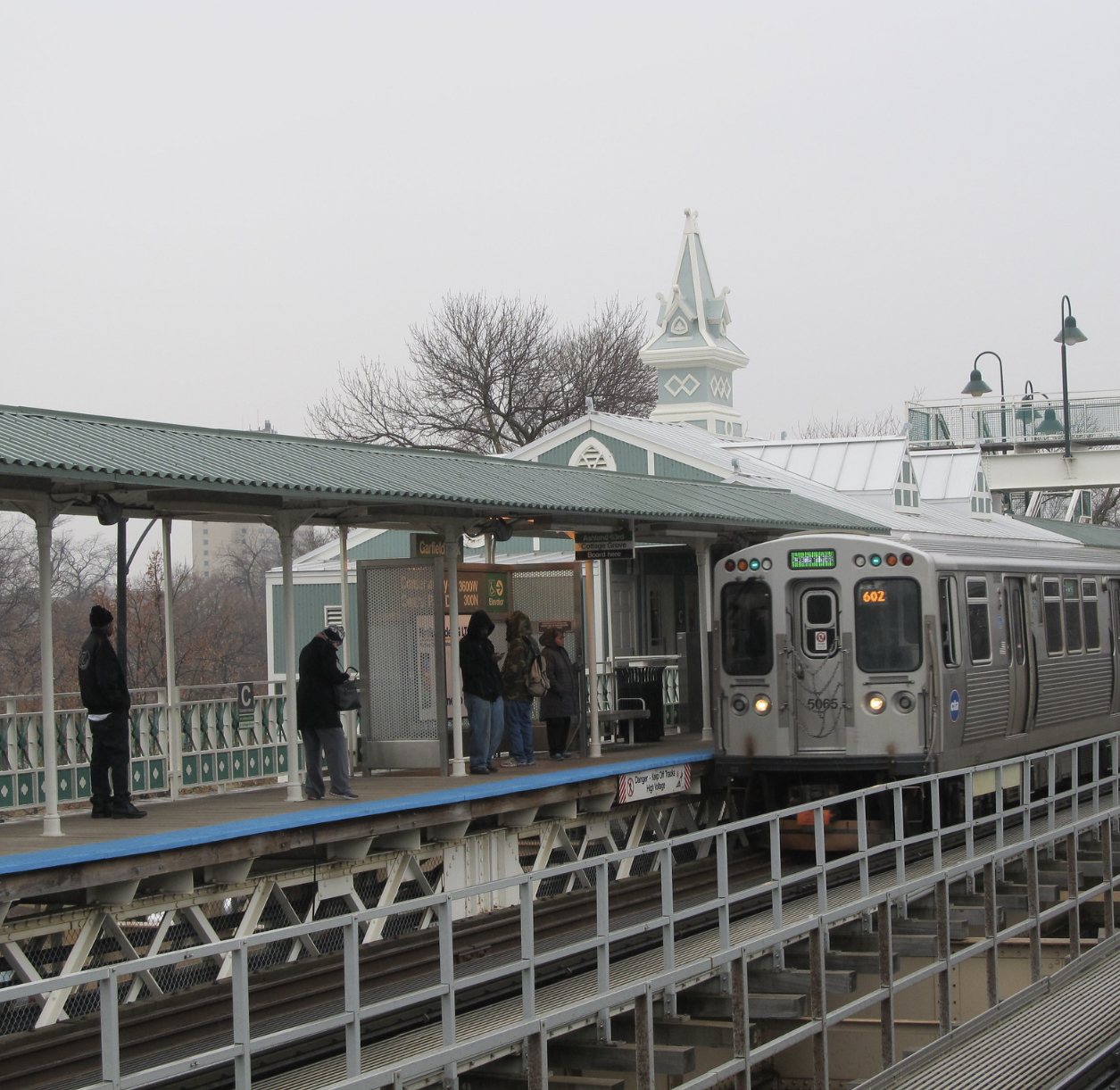I'm fed up with mainstream media outlets treating Roger Romanelli, the executive director of the Fulton Market Association, as a real-deal transit advocate. This happens way too often.
It's more accurate to say Romanelli is an anti-sustainable transportation activist. Longtime Streetsblog Chicago readers are familiar with how he helped kill the Ashland Avenue bus rapid transit project with a misleading Not In My Back Yard-style backlash campaign. Currently a resident of west-suburban Hillside, he also fought a state project to improve safety on the Illinois Prairie Path.
Recently, Romanelli has called for earmarking $2 billion out of Illinois' estimated $17 billion in federal infrastructure funds for projects on Chicago's West Side, supposedly transit improvements. $1.8 billion of that money would be used to relocate the Lake Street Green Line ‘L’ columns that are currently in the middle of the road to the sidewalk, and raise the tracks.
Romanelli claims one of the main purposes of doing this would be to allow for reinstating bus service on Lake. The old #16 Lake bus route used narrower 96-inch-wide vehicles that could safely pass each other between the 'L' structures, but was eventually cancelled.

Local transit experts have pointed out that, since the Lake Street branch was last renovated in the 1990s, not that long ago in 'L' years, there's no point in spending billions to rebuild it now. And while the overhaul would have have little or no benefit for train riders, it would make driving on Lake more convenient for people heading into the city for the western suburbs, and businesses that use trucks, one of the Fulton Market Association’s main constituencies. In other words, this is mostly a driving scheme, wrapped in transit project's clothing.
So it's particularly annoying that, along with legitimate transit advocates from the Active Transportation Alliance and the Metropolitan Planning Council, Romanelli is quoted in Monday's Sun-Times article about the city's new Better Streets for Buses initiative, which is seeking public input on ways to improve CTA bus service. Again, he's the guy largely responsible for blocking the city from improving bus service on Ashland by stoking fears among drivers and merchants that dedicated bus lanes on the avenue would create a traffic nightmare.

The main argument Romanelli makes in the Sun-Times article is that it's imperative for the CTA restore the Lake Street bus (which would require spending billions to move the track pillars, which would just happen to make driving easier.) But that's based on a fallacy, Romanelli's claim that the Lake Street 'L' is "the only rail line that doesn’t have a corresponding bus service within an eighth of a mile."
Granted, there are some upsides to having bus service with frequent stops (typically every block in Chicago) that closely parallels a nearby train line with more limited stops (often every four blocks in our city.) It's useful for people who need or want to minimize the amount of walking or wheelchair rolling to their destination.
And belt-and-suspenders bus service is very helpful if the train line has non-ADA-accessible stations. That's the case with most of the stops on the Blue Line's O'Hare branch between Grand Avenue and Logan Square, which don't have elevators. So it's a good thing that the #56 Milwaukee bus closely parallels the 'L' on that stretch to provide an alternative for people who use wheelchairs or can't climb lots of steps. However, every station on the Lake 'L' branch within Chicago has a lift, so that point is pretty much moot for Romanelli's argument.

Moreover a quick glance at the CTA system map shows that Romanelli's claim that the Lake 'L' is the only CTA train route (let's not even get started on Metra lines) that lacks parallel bus service within an eighth of a mile, one standard Chicago block, is balderdash.
Yes, there are some other examples of 'L' branches that are closely paralleled by bus lines for part of the route. Much of the south Green Line is hugged by the #3 King Drive bus. Several different buses parallel the Red Line on the South and North sides.

For much of its route the Orange Line runs above the #62 Archer bus corridor. And the #21 Cermak bus runs close to a good chunk of the Pink Line.
But even in all those cases, a single bus line isn't running within a block of the entire 'L' branch, which is what Romanelli insists is needed on Lake Street. Meanwhile, the #20 Madison bus runs within a few blocks of Lake, so it's not like the Green Line is located in the middle of a vast bus desert.

So fellow Chicago transportation reporters, I'm begging you: Please don't call Roger Romanelli when you need an intelligent quote about transit. Thanks!





